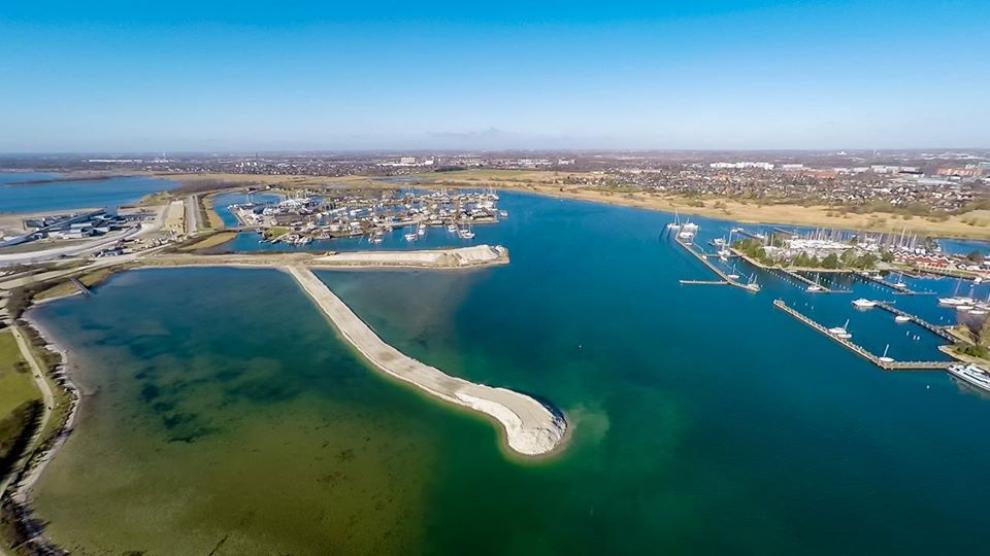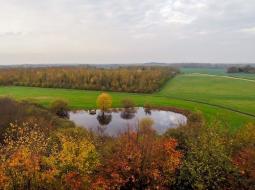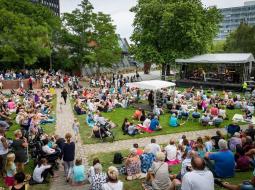Thessaloniki gets ready for its metro launch in November
The underground rapid transit lines have been under construction for almost two decades due to various project delays
 TheMayor.EU logo
TheMayor.EU logo 
The origins of Ishøj can be traced back to the Bronze Age – as testified by an ancient Bronze Age coat of arms found in one of the town’s two preserved burial mounds. Further proving the ancient roots of the city, archaeologists discovered a rich tomb from the earlier Roman Iron Age at Torslunde Mark, where they found Roman glass and bronze vessels.
Ishøj Municipality was established in 1842 under the name Torslunde-Ishøj Parish Municipality. Back then, the municipality consisted of Torslunde parish with the village of Torslundemagle and Ishøj parish with the villages of Ishøj and Tranegilde. After the large expansion envisioned in the Køge Bay plan, the municipality changed its name to Ishøj in 1975.
The development of Ishøj was part of the Køge Bay plan. The goal was to create well-planned and thought out suburbs for Copenhagen and the initiative was kickstarted through the Køge Bay Act of 1961. The law was based on the Finger Plan and the extension of the S-train line to Køge. The Køge Bay plan was an ambitious idea aimed at triggering a new period of growth area for 150,000 people. Based on the plan, the municipalities subsequently prepared retail plans that were in time brought into line with the development of the railway and the road network. The nine S-train stations from Avedøre to Jersie were to form new centres for new cities with 10,000-20,000 inhabitants.
Generally, during the development, the density of buildings was greater near the stations, the detached houses were located close to the beach and the business areas separate from the residential areas. The population of Ishøj increased enormously. In 1965, 3,000 people lived in Ishøj and by 1979 the number had increased to about 20,500, which is roughly equal to today's population.
In 1980, Ishøj Strandpark was inaugurated as part of Køge Bugt Strandpark, which helped to give the whole coastline a positive boost. The beach park is an artificially developed coastline located 400-500 meters in front of the original. Køge Bay Beach Park contains 7 km of sandy beach, of which about 2.5 km in Ishøj. The beach park has resulted in many local improvements, including better water quality and superior storm surge protection in the low-rise detached houses. Furthermore, Strandparken has developed into an important breeding and resting area for a wide variety of bird species of ornithological interest.
Ishøj is a town with a population of 20,017 (January 2015). It is located in the region Hovedstaden. It is the seat of the Ishøj Municipality. The municipality covers 26 km², with a total population of 21,675 (April 2014).
Most of the public and private services of the Municipality are situated in Ishøj City Center, located at the station.

Ishøj is a green municipality with wetlands, fields and forest of more than 75 percent of the area. Ishøj is the town by the beach with marina, campsites and lakes.

One can see modern Ishøj around the Ishøj City Center. Here there are streets and squares with town halls, shops and restaurants of all kinds. The Ishøj of old, meanwhile, can be seen in the villages of Torslunde, Tranegilde and Ishøj Village. Here there are thatched houses, old churches and burial mounds.
Address: Ishøj Store Tory 20, 2635 Ishøj